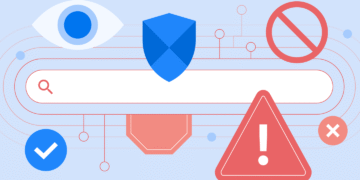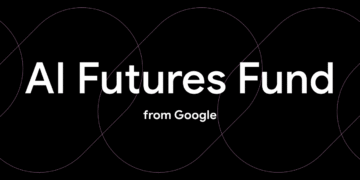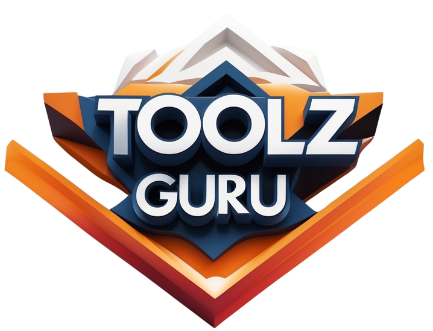In today’s rapidly evolving business landscape, efficiency is paramount. Companies are constantly seeking innovative ways to enhance productivity and streamline operations. One of the most transformative trends is the integration of artificial intelligence (AI) into workplace tools. AI productivity tools are not just a technological trend; they are revolutionizing how businesses operate, shaping a future where efficiency and automation work hand in hand.
The Rise of AI Productivity Tools
AI productivity tools encompass a wide range of applications, from smart scheduling and data analysis to natural language processing and project management. These tools leverage advanced algorithms, machine learning, and data analytics to automate routine tasks, thereby freeing employees to focus on higher-value work.
The rise of remote and hybrid work models, accelerated by the COVID-19 pandemic, has further driven the adoption of AI tools. Organizations have had to adapt quickly to new working conditions, and AI has emerged as a critical enabler in this transition.
Key Areas of Transformation
1. Task Automation
One of the most significant benefits of AI productivity tools is their ability to automate repetitive and time-consuming tasks. For instance, AI-driven virtual assistants can handle scheduling, email management, and even basic customer inquiries. Tools such as Microsoft Power Automate and Zapier facilitate automation of workflows, allowing users to set triggers that execute specific actions without manual intervention.
By automating mundane tasks, organizations can significantly reduce time spent on administrative functions, allowing teams to focus on strategic projects that drive growth.
2. Enhanced Data Analysis
Data is often considered the new oil in the modern economy, but analyzing vast amounts of data can be daunting. AI-powered analytics tools, like Tableau and Google Analytics, enable businesses to gain insights from data trends through natural language queries and visualizations.
Machine learning algorithms can identify patterns and anomalies that might go unnoticed by human analysts, providing valuable insights into customer behavior, operational efficiency, and market trends. By harnessing the power of AI-driven data analysis, organizations can make informed decisions quickly, keeping them agile in a competitive landscape.
3. Improved Communication and Collaboration
Effective communication and collaboration are vital for any team, especially in a hybrid work environment. AI tools such as Slack and Microsoft Teams offer features like intelligent chatbots that can answer common queries, schedule meetings, and summarize discussions.
Furthermore, AI can enhance collaboration through tools like Otter.ai, which transcribes meetings in real-time, allowing team members to focus on discussion rather than note-taking. With improved communication, teams can work together more effectively, regardless of physical location.
4. Personalized Employee Experiences
AI is not only transforming external operations but also enhancing the employee experience internally. AI-driven HR tools can analyze employee data to provide personalized career development recommendations, monitor employee engagement, and even predict potential turnover.
For example, platforms like Lattice and Workday leverage AI to tailor feedback and learning opportunities for individual employees. This personalization aids in employee satisfaction and retention, creating a more engaged workforce.
5. Enhanced Customer Support
Customer service is a crucial area where AI productivity tools shine. AI-powered chatbots and virtual agents can provide instant assistance to customers, handling inquiries around the clock without the need for human intervention. Tools like Zendesk and Intercom utilize machine learning to adapt and evolve with customer interactions, offering increasingly personalized support.
By enhancing customer support with AI, businesses can improve response times, reduce operational costs, and ultimately foster stronger customer relationships.
6. Decision-Making Support
AI tools can assist stakeholders in making better decisions by providing predictive analytics and actionable insights. For instance, tools like IBM Watson can analyze vast datasets to forecast market trends, enabling businesses to make proactive adjustments.
AI-driven decision support systems help organizations reduce bias in decision-making, as they rely on objective data rather than subjective opinions. This leads to better outcomes, from strategic planning to day-to-day operations.
Challenges in Adoption
While the benefits of AI productivity tools are compelling, organizations face challenges in adopting these technologies. Issues such as resistance to change, data privacy concerns, and the need for employee training must be addressed to fully realize the potential of AI.
Organizations must build a culture that embraces innovation while ensuring ethical AI use. This includes transparency in how AI algorithms make decisions and involving employees in the transition to create a sense of ownership and understanding.
The Future of AI in Workplaces
As technology continues to evolve, the future of AI in the workplace looks promising. Advances in natural language processing, computer vision, and machine learning will lead to even more sophisticated tools. The rise of AI-human collaboration is expected to enhance creativity and innovation, pushing the boundaries of what teams can achieve.
Moreover, as more organizations recognize the importance of mental health and well-being, AI tools can contribute by monitoring employee workloads and offering insights that help prevent burnout.
Conclusion
AI productivity tools are more than just a trend; they are reshaping the future of work. By automating repetitive tasks, enhancing data analysis, improving communication and collaboration, personalizing employee experiences, and providing decision-making support, AI is driving efficiency and productivity in workplaces across various industries.
As businesses navigate the challenges of implementation and foster a culture open to change, they will find that the advantages of adopting AI tools far outweigh the potential drawbacks. Embracing this technology will not only boost efficiency but will also position organizations for success in an increasingly complex global marketplace.
FAQs
1. What are AI productivity tools?
AI productivity tools are applications that use artificial intelligence to automate tasks, analyze data, enhance communication, and improve decision-making in the workplace.
2. How can AI tools boost company efficiency?
AI tools can automate repetitive tasks, provide real-time insights, enhance collaboration, and personalize employee experiences, allowing employees to focus on higher-value activities.
3. What are some examples of AI productivity tools?
Examples include virtual assistants like Siri and Alexa, project management tools like Asana and Trello, analytics platforms like Tableau and Google Analytics, and customer service chatbots like Intercom.
4. What challenges do companies face when implementing AI tools?
Challenges include employee resistance to change, data privacy concerns, and the need for staff training on new technologies.
5. Is AI taking away jobs?
AI is transforming job roles by automating routine tasks, allowing employees to focus on more strategic and creative activities. It is important to adapt and reskill the workforce to leverage these changes positively.
6. How can organizations ensure ethical use of AI?
Organizations can ensure ethical use of AI by being transparent about AI decision-making processes, involving employees in implementation, and ensuring data privacy is prioritized.




















